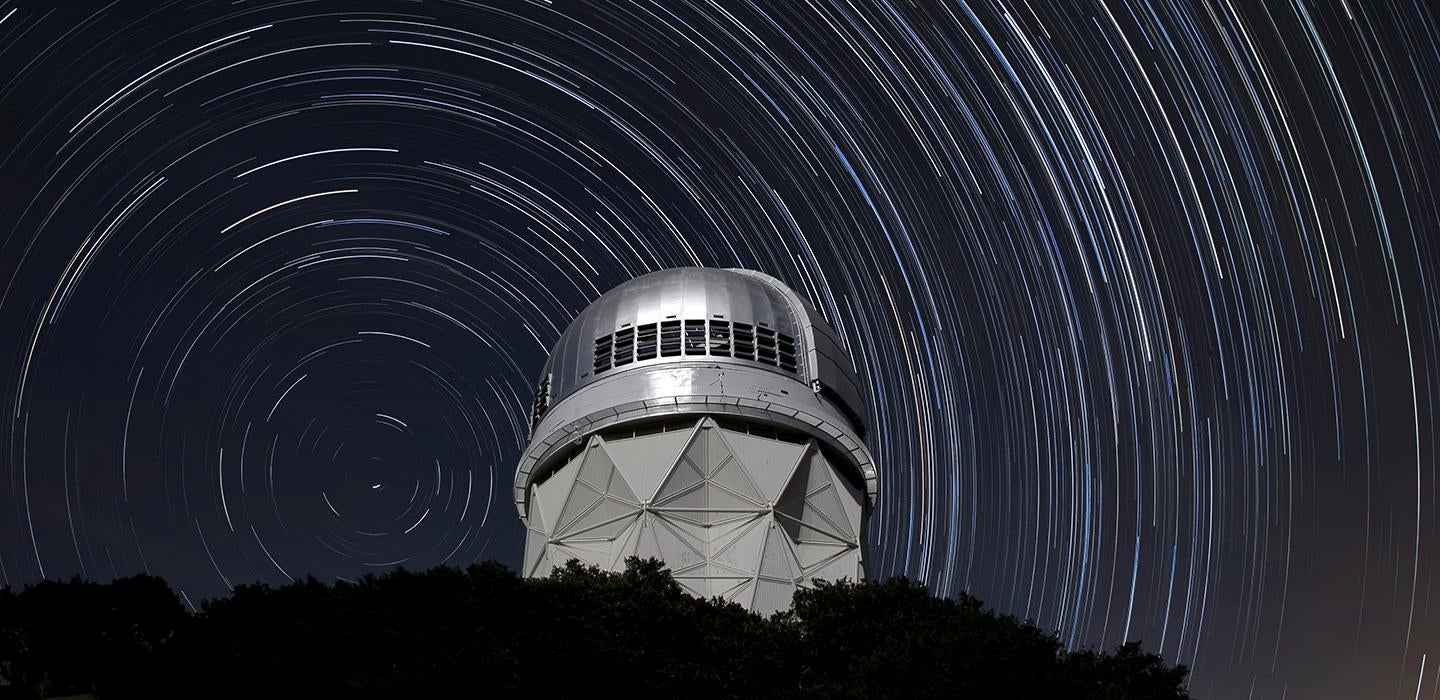
Subscribe to Pittwire Today
Get the most interesting and important stories from the University of Pittsburgh.For the next five years, a telescope in Arizona is slated to peer across the universe, creating a massive map of galaxies in the hopes of cracking some of the universe’s deepest mysteries. Just six months in, the team announced on Jan. 13, the project has already accumulated the biggest three-dimensional map of galaxies ever assembled — and it’s adding another million to that map every month.
The Dark Energy Spectroscopic Instrument (DESI) is an international collaboration of hundreds of scientists led by the Lawrence Berkeley National Laboratory and funded primarily by the U.S. Department of Energy’s Office of Science.
“We’re already outstripping all previous maps using galaxies, even with less than a year’s data,” said Department of Physics and Astronomy Professor Jeffrey Newman in the Kenneth P. Dietrich School of Arts and Sciences. “This new eye on the universe is now open.”
If you want to map the universe’s galaxies, you have to first figure out where to look. That’s where Newman comes in. Using data from hundreds of nights of observations from telescopes in Chile and Arizona and another in orbit, Newman and his students spent eight years assembling massive lists of galaxies with the right properties.
“It’s about figuring out which ones are far enough away to be interesting, but bright enough that we can actually get the measurements we need to make the maps,” Newman said.
DESI can follow up on each observation and gather a detailed snapshot of the galaxy’s color spectrum — information that tells researchers the galaxy’s distance from Earth. The result is to bring the map of more than a third of the sky into far sharper focus.
Mapping out these strings of galaxies, like veins of cosmic ore, will help researchers get at key questions behind the mysteries of dark matter. That’s because dark matter pulls in the gas around it, creating concentrations of mass that form galaxies.
“When you see a galaxy, there’s five times as much dark matter there — really, this dark matter is running the show, even though we can’t see it,” said Newman. “We make three dimensional maps of the universe using these galaxies to show us where this underlying web of dark matter is located.”
And this new view of the current universe will also help researchers understand its past, giving them insight into the dark energy that’s driving the universe’s accelerating expansion.
The key to creating these maps is a marriage of old and new: a half-a-century-old telescope at the Kitt Peak National Observatory in Arizona retrofitted with a tremendously complicated new apparatus consisting of 5,000 robots.
“DESI has completely taken over one of the largest telescopes in the continental U.S.,” Newman said. “You take that older telescope and put a state-of-the-art instrument on it, and now it can do things that no other telescope on Earth can do.”
Each robot, equipped with an optical fiber, can rotate and move to precisely align with a target. That allows the telescope to collect detailed information about the position of distant galaxies at a rate that was previously impossible. So far, it’s up to more than seven and a half million, and it’ll eventually map almost five times that many.
“We’re really just getting a taste of what the data is going to look like, but we can already see the signals we’re looking for,” Newman said. He’s confident that the project will give scientists a clearer understanding of the properties of dark energy. Whether the project can help scientists weigh in on deeper questions like the validity of Einstein’s theory of relativity will take some more time to tell.
With the targets for DESI selected, Newman has set the project up for success. But he’s already got his eye on what comes next, whether that’s extending maps back closer to the Big Bang or making more detailed maps of the near universe.
“You don’t want to have this thing in mothballs and not making new contributions, because it’s a really unique resource,” Newman said. “Four years from now we’ll have completed our mission, and we’ll still have a $75 million instrument that can do things that nothing else can.”
— Patrick Monahan, photo credit: KPNO/NOIRLab/NSF/AURA/P. Marenfeld


